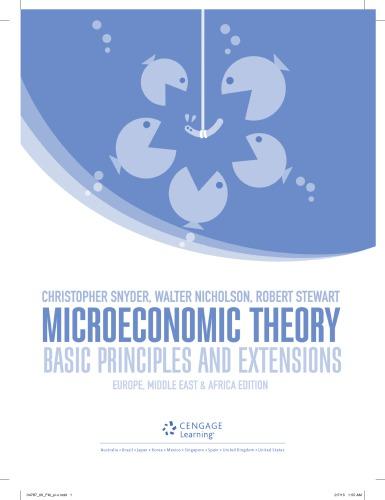13.13 A few results from demand theory The theory developed in this chapter treats labour supply as...
Question:
13.13 A few results from demand theory The theory developed in this chapter treats labour supply as the mirror image of the demand for leisure. Hence, the entire body of demand theory developed in Part Two of the text becomes relevant to the study of labour supply as well.
Here are three examples.
a.
Roy’s identity. Demand functions can be derived from indirect utility functions by using Roy’s identity. Use a similar approach to show that the labour supply function associated with the utility-maximisation problem described in Equation 13.20 can be derived from the indirect utility function by l
(w, n) = �V
(w, n)/�w
�V
(w, n)/�n
.
Illustrate this result for the Cobb–Douglas case described in Example 13.1.
b.
Substitutes and complements. A change in the real wage will affect not only labour supply, but also the demand for speciic items in the preferred consumption bundle. Develop a Slutsky-type equation for the cross-price effect of a change in w on a particular consumption item and then use it to discuss whether leisure and the item are (net or gross) substitutes or complements. Provide an example of each type of relationship.
c.
Labour supply and marginal expense. Use a derivation similar to that used to calculate marginal revenue for a given demand curve to show that ME l = w (1 + 1/ e l , w ).
Step by Step Answer:

Microeconomic Theory Basic Principles And Extensions
ISBN: 9781473729483
1st Edition
Authors: Christopher M Snyder, Walter Nicholson, Robert B Stewart






